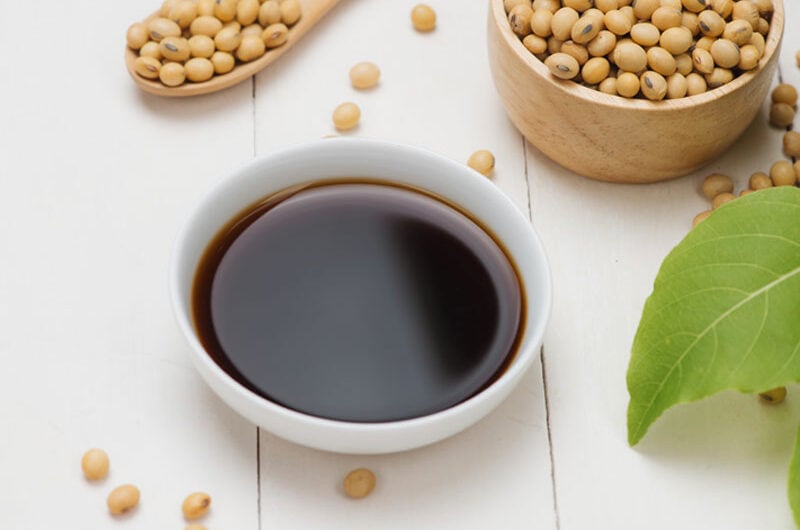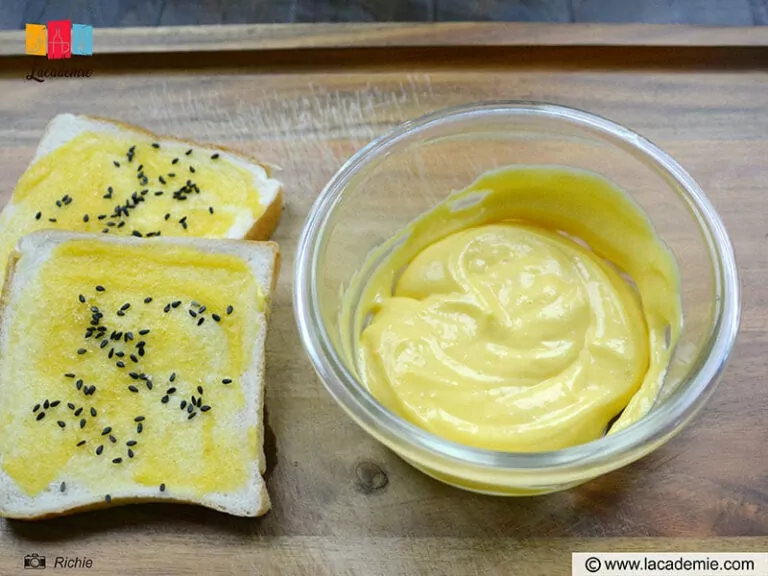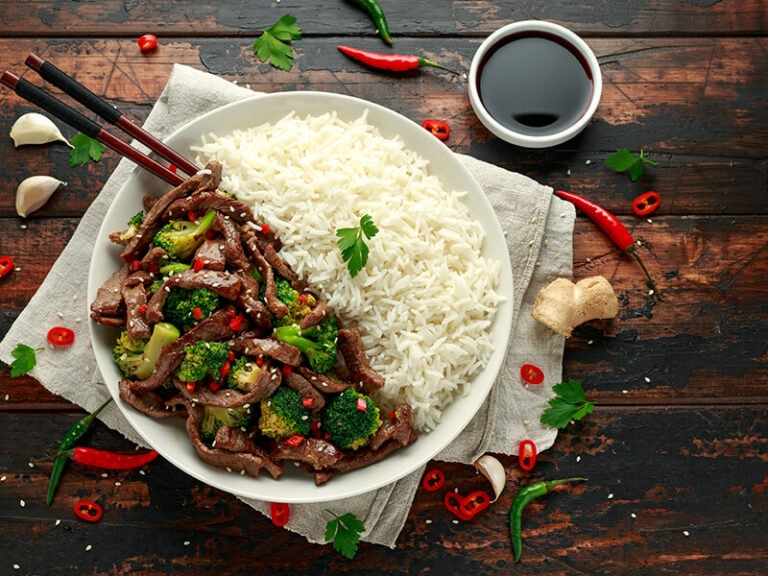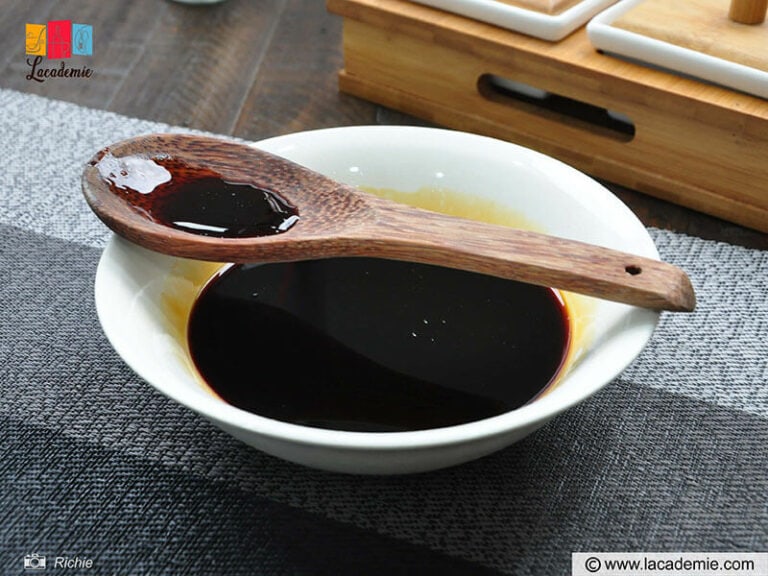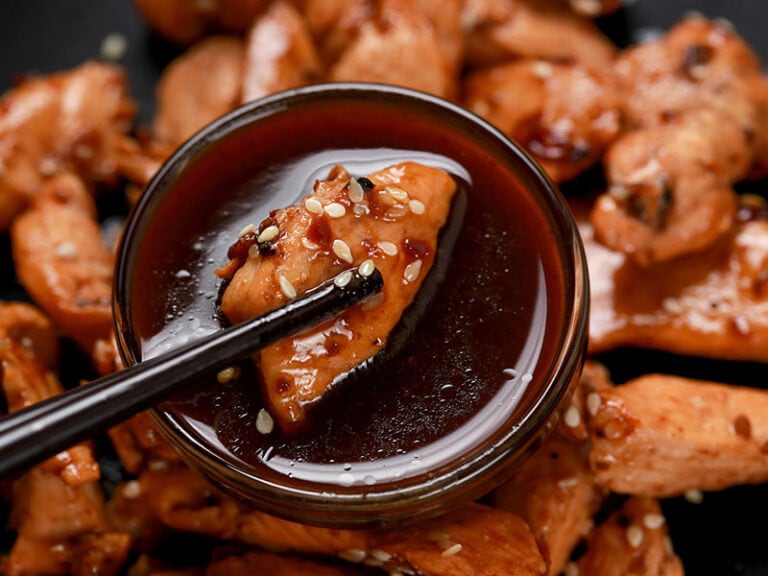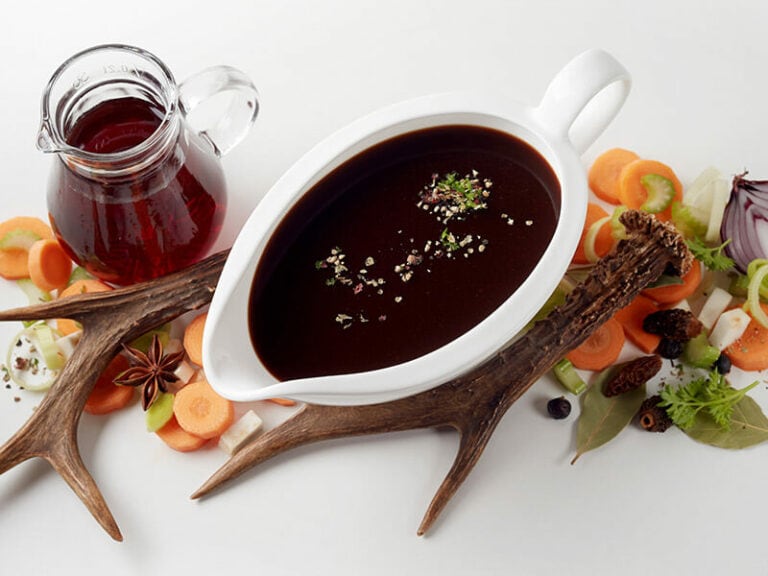Finding the right soy sauce substitutes can be a headache for some people. It is, after all, a quite peculiar and special seasoning. It adds an interesting edge in terms of looks and flavor to your meals.
Dark soy sauce, while originating from China, has long been a popular condiment in the U.S for its tastiness. Some might even go as far as saying it is a kitchen stapler in American homes.
However, sometimes you have to find a replacement for dark soy sauces – for various reasons. That’s where this post comes in. In this post, I will walk you through the basics of dark soy sauce and some of its best replacements.
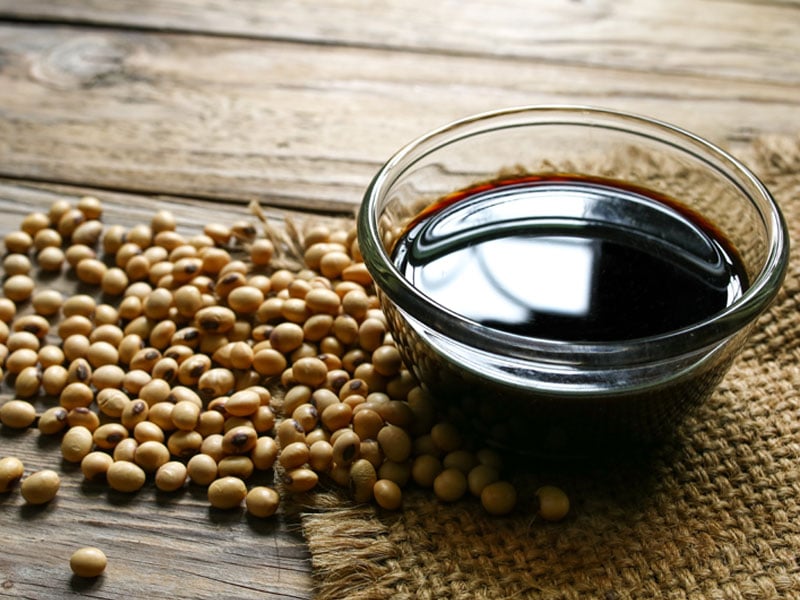
A Brief Introduction To Dark Soy Sauce
As you can probably tell from the name, dark soy sauce’s essential ingredient is soybeans. These soybeans are combined with other ingredients like wheat, salt, water, sugar, caramel, and coloring to create a thick liquid called dark soy sauce. (1)
Very few people know that dark soy sauce has been around for at least a thousand years. Dark soy sauce is often known for its signature glossy, dark brown to almost black color. It has a thick, syrupy texture.
If you dive deep into the world of soy sauce, there’s one word you need to know, which is “umami”. Umami is a Japanese word to indicate “savoriness”, and is often associated with broths and cooked meats. (2)
Dark soy sauce has a strong umami flavor, though it is more salty than sweet.
People use soy sauce for both its flavor and appearance. Some dishes apply soy sauce as they need its glossy, glazed appearance. Other recipes, usually for braised or red-cooked meats, require dark soy sauce to deepen their flavor.
People also use dark soy sauce as a dipping sauce for meats and seafood or a marinade for beef or pork.
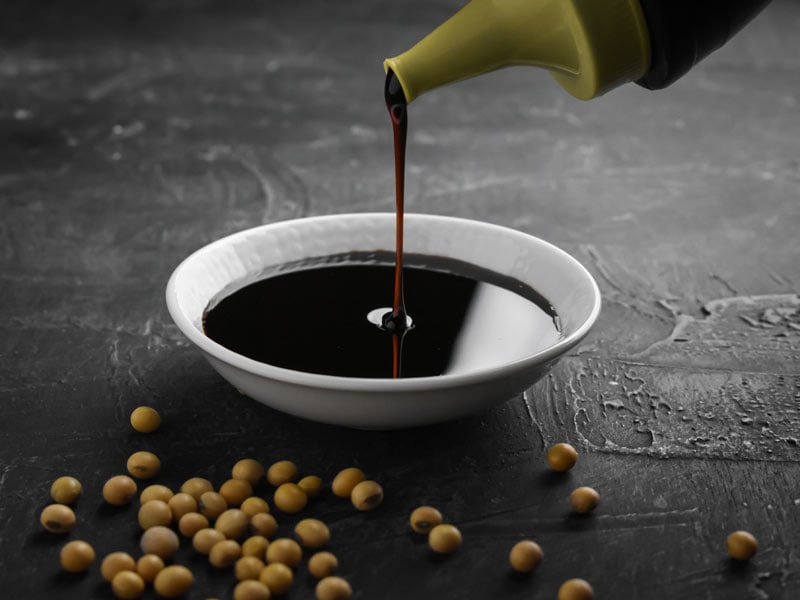
Other Types Of Soy Sauce
Of course, the name “dark soy sauce” already implies the existence of other types of soy sauce. Since people often confuse soy sauce can with each other, here are some of the key takeaways you need to remember to differentiate between them.
Light Soy Sauce
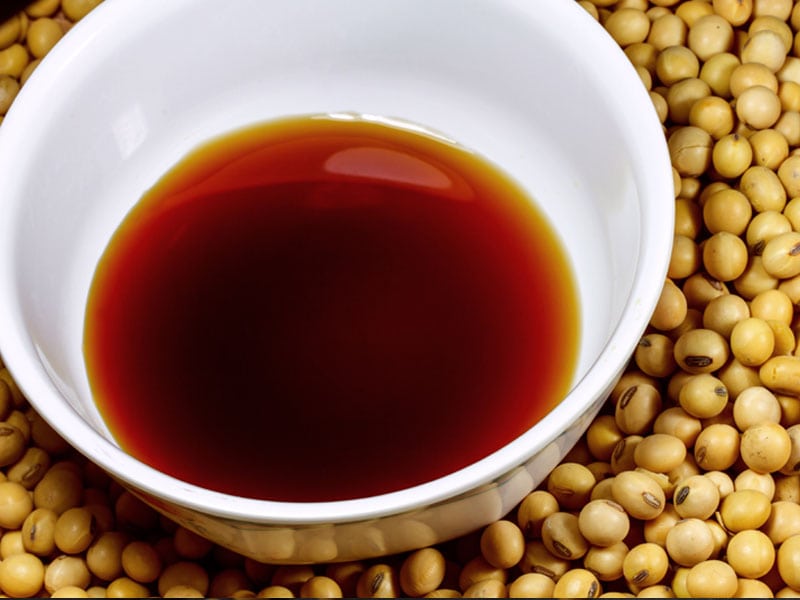
Light soy sauce, as you can tell from the name, is the “lighter” version of dark soy sauce. This means it has a light brownish color and a thinner, more watery texture than its dark counterpart.
In terms of flavor, light soy sauce tastes saltier than dark soy sauce. People often serve light soy sauce as a dipping sauce, while dark soy sauce tends to be a part of dishes.
Light vs. dark soy sauce – all the differences and similarities.
All-Purpose Soy Sauce
All-purpose soy sauce or regular soy sauce is the basic middle child of the soy sauce trio. It provides an umami flavor but is not overwhelming like the other two’s. It also has a deep red-brown color and a thin, liquid-like texture.
All-purpose soy sauce, or regular soy sauce, often appears in dishes that require a light umami flavor. It doesn’t contribute the same glossy, glazed look to food as dark soy sauce does.
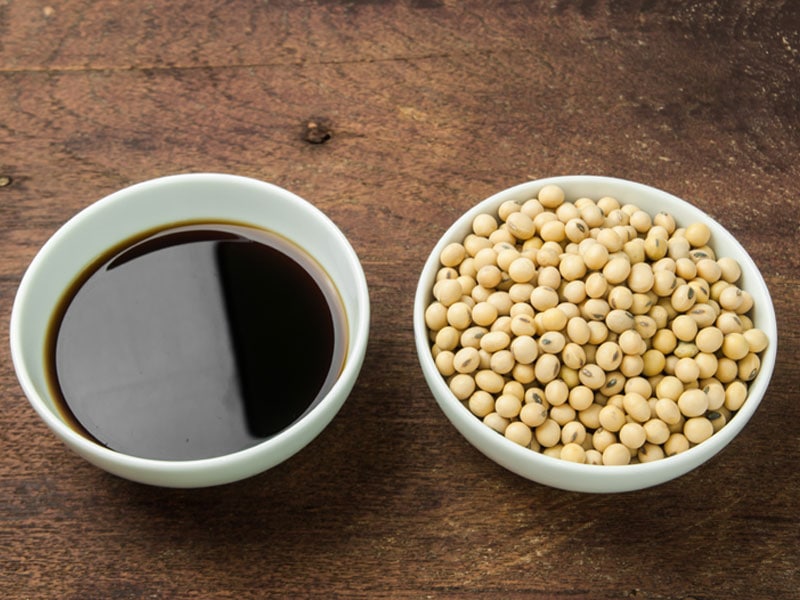
Dark Soy Sauce Substitutes
There are many reasons people try replacing dark soy sauce. They might want to change the flavors of the meals to something newer and fresher. Maybe they are allergic to an ingredient, or there’s something in dark soy sauce’s flavor profile that they don’t like.
Nevertheless, you will need to be careful when choosing a substitute to ensure that it suits your taste and preference.
In the next part, I will detail different substitutes for dark soy sauce. But before that, you can skim over this table which lays out the key features of the potential substitutes.
For the ratio column, remember that the substitutes go before dark soy sauce. For example, a 1:2 ratio means that one teaspoon of Worcestershire sauce can replace 2 teaspoons of dark soy sauce.
1. Light Soy Sauce
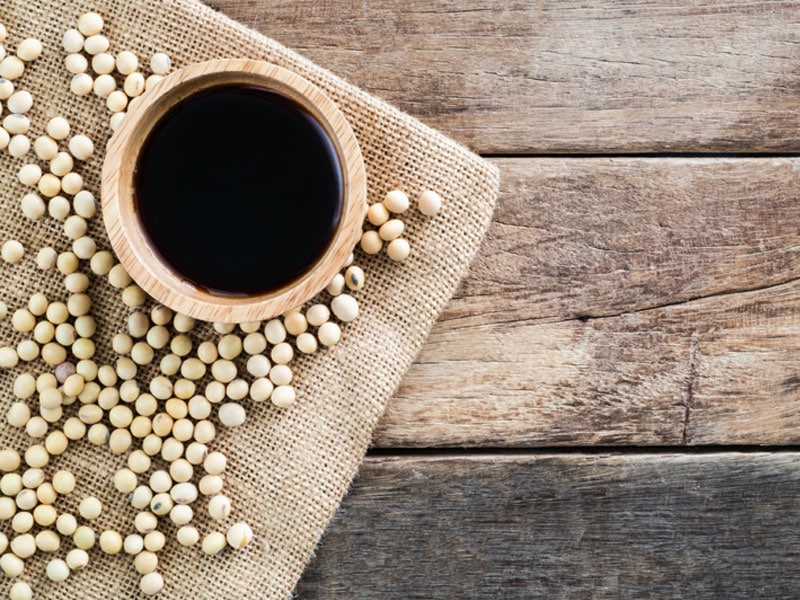
Lighter soy sauce has the same flavor profile as dark soy sauce, which is salty, savory, and sweet. However, it contains much less sodium, so light soy sauce is the better option for those who have to watch their sodium intake.
Light soy sauce is a great substitute if the dish requires a similar umami flavor, so it works best when paired with meats, seafood, or vegetable-based dishes.
Unfortunately, light soy sauce won’t be suitable if you need to create a thick texture or a dark, glazed appearance like dark soy sauce.
You can use a 1:1 ratio with dark soy sauce, which means you can replace each tablespoon of dark soy sauce with a tablespoon of light soy sauce.
2. Molasses
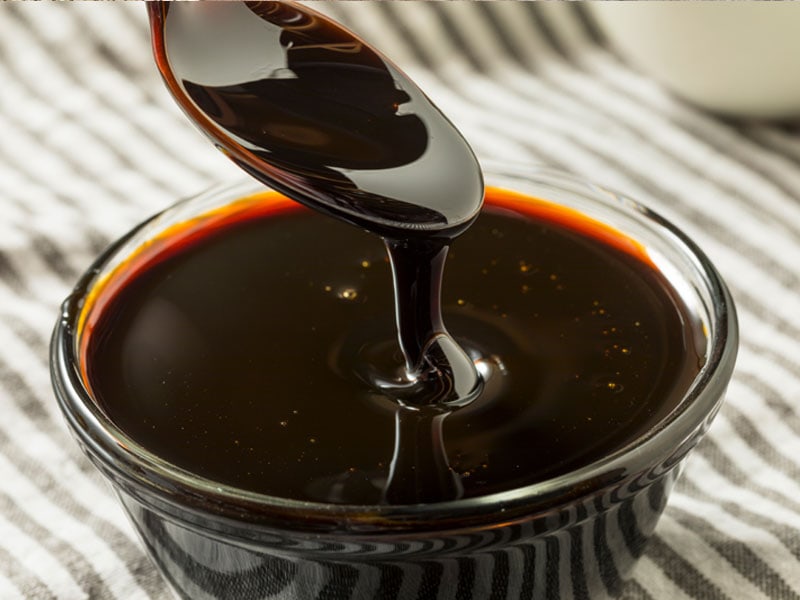
If you are unfamiliar with the name, molasses is a thick liquid resulting from the sugar-making procedure. It is bitter-sweet, rich, and has a dark brown-black color with a smooth, syrupy texture, which resembles dark soy sauce.
You might also have noticed that molasses is not salty – it doesn’t contain any salt, and therefore if you use molasses, you also need to add more salt to your dish.
Molasses can serve as a fine replacement for dark soy sauce in pretty much all recipes, as long as you remember to add some salt in. Replace a teaspoon of dark soy sauce with a teaspoon of molasses and half a teaspoon of light soy sauce, and you’d be all set!
This is everything you need to know about molasses.
3. Oyster Sauce
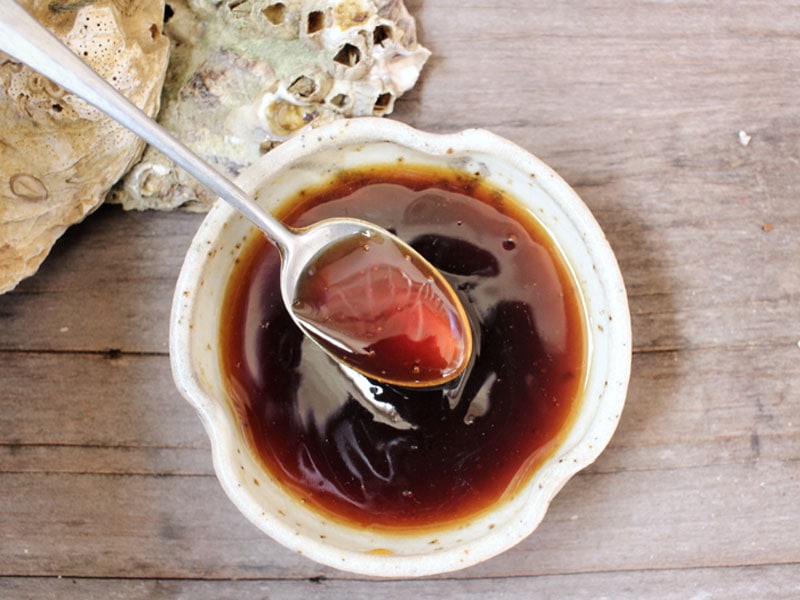
As the name suggests, oyster sauce is a product coming from oysters. After caramelization, oyster juice combines salt and sugar to make the oyster sauce. Sometimes oyster sauce recipes also include soy sauce or cornstarch to thicken the texture.
Like dark soy sauce, the oyster sauce has a thick texture and a deep dark brown color. As the oyster juice is caramelized, the oyster sauce has a tinge of caramel flavor along with its signature sweet, salty, and earthy flavors.
If you don’t mind the lingering oyster aroma, oyster sauce is an excellent substitute for dark soy sauce in dishes with beef, tofu, or vegetable, as well as in Asian recipes like noodles or fried rice.
As the sauce’s flavor is quite peculiar, with a hint of oyster aroma, you need to proceed with caution when using it.
It’s advisable to add half a teaspoon of oyster sauce and check the taste. If you want more flavor, add another half a teaspoon to taste.
Oyster sauce is quite easy to make if you follow the right instructions.
4. Worcestershire Sauce

A simple sauce that has a not-so-simple spelling, Worcestershire sauce can sometimes cause issues when people go look for it and try to pronounce the name to the cashier. But it makes an excellent substitute for dark soy sauce, so it may be worth all the trouble.
Worcestershire sauce flavor profile has layers and complexity: it is salty, savory, and tangy with a tinge of sweetness all at once. It has a thin, watery texture and a light brown color.
Worcestershire sauce is not what you’re looking for if you need a dark glaze and thick texture. However, the sauce can support both traditional Asian and Italian dishes. It can be used in sauces, marinades, and burger patties. Isn’t the versatility great?
It is also gluten-free, which makes it the best option for those with celiac disease or who prefer their meals to be gluten-free.
Worcestershire sauce packs a flavor punch, so you need to ration it carefully. It’s best to start with about half a teaspoon of Worcestershire sauce for each teaspoon of dark soy sauce, and you can adjust from there.
Another note is that the sauce leans more on the salty side of the flavor scale, so you need to prepare some extra honey or sugar to mix in.
5. Coconut Aminos
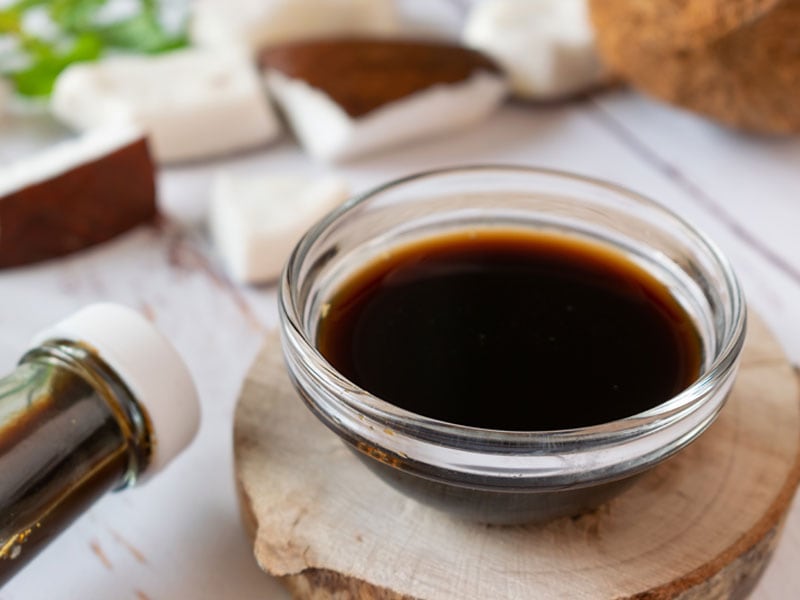
Coconut aminos is the result of fermenting coconut trees’ sap using sea salt. It is a popular replacement for dark soy sauce with a dark brown color and a thick texture.
Before you ask, I have to clarify one thing: Coconut aminos do not taste like coconut. It tastes savory and salty, with only a slight sweetness.
This is because the sugar inside the coconut sap has fermented, and sea salt is also involved in the production process, giving the sauce its savory flavor.
Coconut aminos is often praised for its health benefits as the ingredients don’t contain any soy, gluten, or wheat. It also contains less sodium than dark soy sauce. I’d say coconut aminos is a strong contender for the throne as the best substitute for dark soy sauce.
Coconut aminos contain significantly less sodium than dark soy sauce in one serving. To use, take it out in a 1:1 ratio and mix some kosher salt in for a better taste.
If you haven’t tried coconut aminos, you’re missing out big time.
6. Balsamic Vinegar
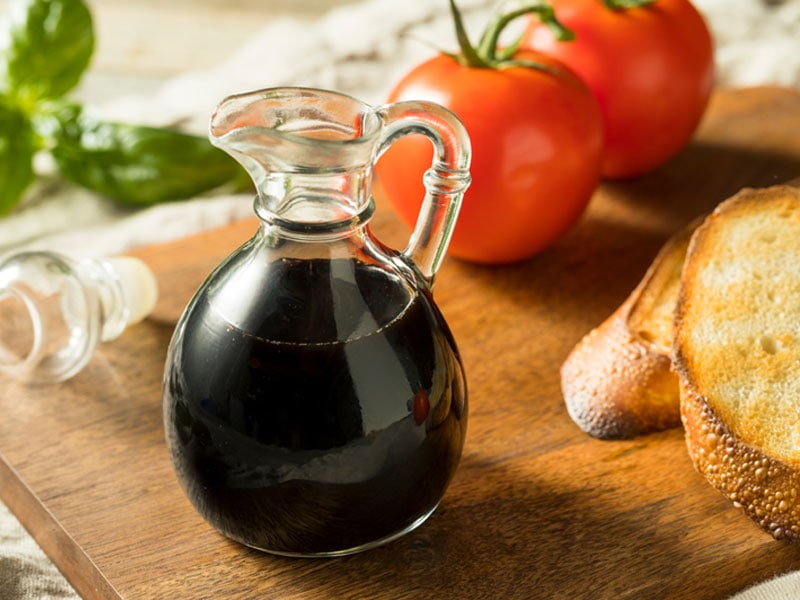
Balsamic vinegar is far from the best replacement for dark soy sauce in the market, but it does the job. So it will do if you are in a rush and have some balsamic vinegar on hand.
This type of vinegar originates from Italy and has a dark color and thick texture, which explains why it’s on this list in the first place. It delivers a sweet, sour, and tart flavor. Some might even say it is a bit fruity.
Balsamic vinegar doesn’t suit meat-based or seafood-based dishes because of its taste. It tends to work better with cold dishes, salads, and vegetables, so keep this in mind before you spray or mix it into your food.
The taste of this sauce is also quite strong, so you should start small. Use half the amount of what you’d use with dark soy sauce and try if it suits your palette. You can always add more later, but once you use too much, there’s no going back.
7. Double Black Soy Sauce
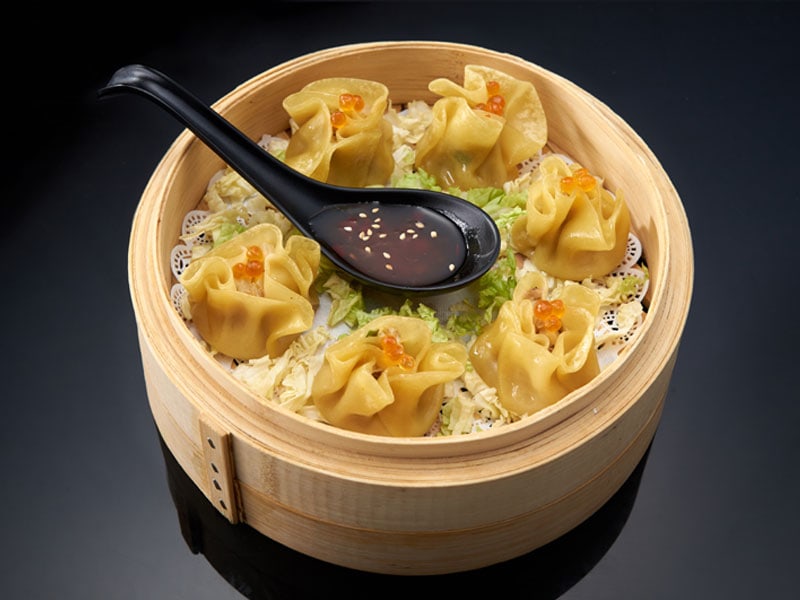
A creation between dark soy sauce and some molasses, double black soy sauce is like the unpopular cousin in the soy sauce family.
Basically, it’s dark soy sauce but stronger, having a sweeter taste, darker color, and a thicker texture. Its sweetness can be quite overwhelming, being much stronger than that of regular soy sauce.
You can use double black soy sauce in pretty much any dish that requires soy sauce, though with a much smaller amount, as its overpowering sweetness can overtake every other flavor in a dish if you’re not careful.
For each teaspoon of dark soy sauce, you can replace it with half a teaspoon of double black soy sauce. Of course, that number is just a suggestion, so you can adjust the ratio based on your preferences.
8. Mushroom-Flavored Dark Soy Sauce
I think the name is quite explanatory, even if you have never heard of this type of sauce before. The mushroom-flavored sauce is, fundamentally, dark soy sauce infused with additional mushroom and spicy flavor.
Mushroom-flavored dark soy sauce ingredients contain dark soy sauce, dried straw mushrooms, and natural flavoring. This can be considered a variant of the traditional dark soy sauce.
People use it in all dishes as a stand-in for dark soy sauce if you don’t mind the mushroom aroma. Just use as much mushroom-flavored soy sauce as you would use regular dark soy sauce, and you are good to go!
As mushroom-flavored soy sauce’s flavor is relatively similar to dark soy sauce, you can use it with a 1:1 ratio.
9. Miso Paste

Miso paste is quite similar to dark soy sauce in flavor – both have the famous umami flavor, with miso paste possessing an additional earthy aroma.
Miso paste can have different colors depending on the type, ranging from white, yellow, and red to dark brown. It has the same thick texture as peanut butter, so you must dilute it in water before use.
It has a variety of uses, including being used as a marinade, added into ramen broth, soups and stews, and salad dressings.
For each cup of dark soy sauce, replace it with one tablespoon of miso paste. For sauces, broth or soups, you can mix miso paste directly into the dish or dilute it in water before use.
You can make miso paste at home with these simple steps.
10. Fish Sauce

Fish sauce and dark soy sauce are close friends in Asian kitchen cabinets. While soy sauce is made from fermented soybeans, fish sauce is the product of fermenting fish.
The biggest difference between fish sauce and dark soy sauce is the smell. The fish sauce tends to have a strong, pungent smell, which may be off-putting for some people. It also has a watery texture, unlike that of dark soy sauce.
Depending on the variety, fish sauce’s color can range from light caramel brown to dark brown.
While the fish sauce and dark soy sauce both have similar umami with a savory flavor, the former’s taste is quite strong and tends to be more salty than sweet. Meanwhile, dark soy sauce tends to have an overwhelming soy flavor.
As fish sauce has a strong fish flavor, it pairs well with seafood dishes, either as an ingredient or a dipping sauce.
You need to do some careful measuring to apply fish sauce to your dishes. Start by replacing a teaspoon of dark soy sauce with half a teaspoon of fish sauce, and if you prefer a saltier flavor profile, you can continue to add more.
11. Tamari
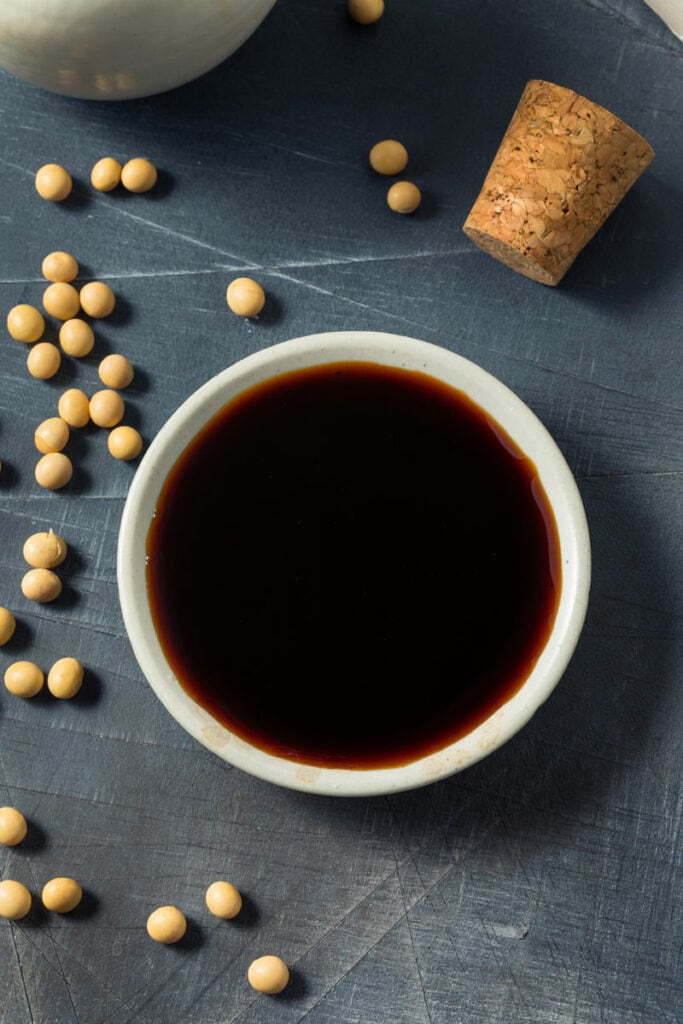
Tamari is a healthier alternative to dark soy sauce. Originating from Japan, tamari has a medium brown color. This means it has a darker shade than light soy sauce but lighter than dark soy sauce.
Like dark soy sauce, tamari is made from soybeans, but it contains little to no wheat and is gluten-free. It also packs an impressive amount of minerals, vitamin B3, and protein that boost your bowel movement.
Tamari has a thicker texture than dark soy sauce, but they look similar with a dark brown shade. Its flavor is rich umami, though it is sweet rather than salty.
People use it in all dishes that require dark soy sauce, though it would shine in Japan-inspired recipes. Remember to use one teaspoon of tamari equals one teaspoon of dark soy sauce in flavor.
12. Teriyaki Sauce
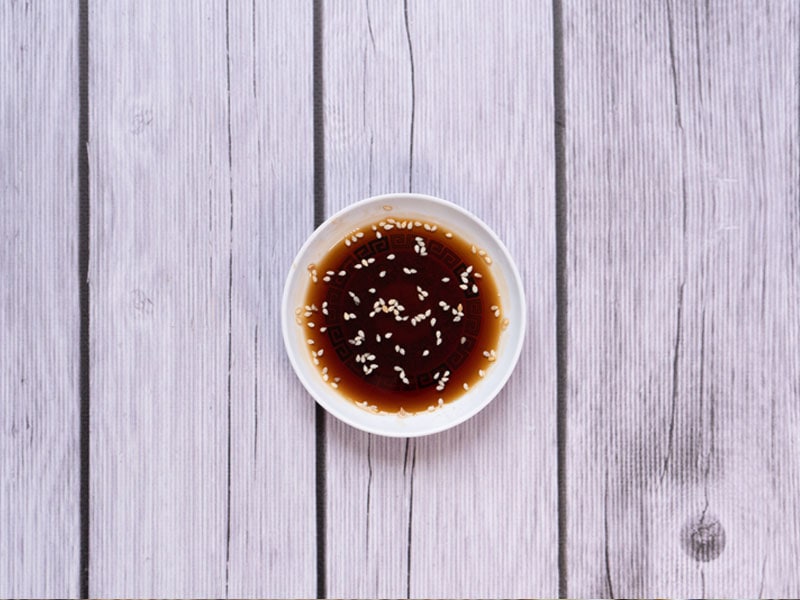
Another excellent stand-in for dark soy sauce is teriyaki sauce. Also originating from Japan (as you can probably tell from the name), teriyaki sauce adds a more interesting and complex flavor layer to your food.
This sauce has the same consistency and thickness as dark soy sauce, and it also shares a dark, brown, glossy appearance.
However, it contains some extra spices like garlic, ginger, and some cooking wines. This creates a sharp, spicy edge to its flavor, changing your dish’s overall taste.
Teriyaki sauce is often used in traditional Asian dishes like stir-fries, dumplings, and noodles. You can also use it as a marinade or condiment.
If you want to try teriyaki sauce, use it in a 1:1 ratio, which means each tablespoon of dark soy sauce can be replaced by a tablespoon of teriyaki sauce.
13. Hoisin Sauce
Hoisin sauce is another cousin in the Japanese sauce family tree. If you like a bit of spicy and sharp flavor, hoisin sauce is a good choice.
Like dark soy sauce, it is made from soybean paste but with the additional ingredients of sesame seeds, garlic, chili peppers, and vinegar.
It has a thick, glossy appearance, which is similar to dark soy sauce. It doesn’t have a dark brown shade. Instead, the sauce is light brown, almost caramel.
Hoisin sauce tastes sweet, salty, and tangy, making your dish a strong umami flavor. It also has a spicy aroma as a result of the additional spices.
Hoisin sauce is amazing as a marinade for meat-based dishes like pork, duck, or beef. It also works well with salads and vegetables. The most famous use of this sauce is in the legendary Peking roasted ducks. (3)
You should use hoisin sauce using the 1:2 ratio, which means one teaspoon of hoisin sauce equals two teaspoons of dark soy sauce.
The combination of hoisin sauce and Peking duck means food heaven.
14. Taucheo
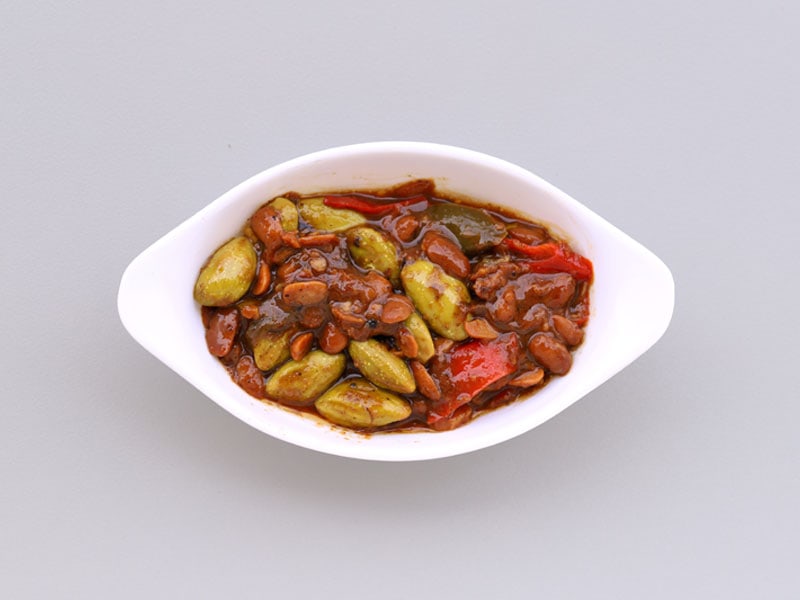
Taucheo (or Tauchu, Tauco, or Taotjo) is a popular condiment in Chinese Indonesian and Malaysian food culture.
Made from fermented soybeans, taucheo can be seen in its whole beans form and paste form. It has a salty, smoky, and yeasty flavor. The production process leads to it having a signature yellow-reddish color that’s distinguishable at first sight.
Taucheo is wonderful for traditional East Asian & South East Asian dishes. As its flavor is quite strong, you should replace it with a tablespoon of taucheo paste for each cup of dark soy sauce.
How Can I Make Dark Soy Sauce At Home?
Look, sometimes people are picky. Sometimes they just don’t want a substitute, and only true dark soy sauce can satisfy their appetite. I have been there and done that. But what if you can’t buy dark soy sauce anywhere?
Making dark soy sauce from scratch is difficult. This makes sense because the production process is quite complicated and long-winded and should be handled by experts.
However, you can make dark soy sauce with a bottle of light soy sauce on your hands. The ingredients should be ready with a bit of brown sugar and water.
Here are the exact amount of ingredients you need to prepare to make the perfect dark soy sauce:
- 2 cups of brown sugar
- ½ cup of water
- 1 cup of regular soy sauce
You can make more if you want, as long as you remember the ratio between the ingredients.
The steps for making dark soy sauce are pretty simple. It should be, as the recipe only involves 3 ingredients. How difficult can it be?
You just need to follow these simple instructions to create the perfect soy sauce:
- Step 1: Place a pan or a pot on the stove and turn on high heat. Add water and sugar, stir and cook until the mixture starts to boil.
- Step 2: Turn down the heat to medium-low and stop stirring. Wait for the liquid to thicken and start turning dark brown. This should take about 15 minutes.
- Step 3: Add light soy sauce. Stir constantly until the sauce thickens further to an almost jam-like texture.
- Step 4: Turn off the heat and pour the result into an airtight bottle or container. Seal the container tightly and keep it in the fridge.
- Step 5: Take out to use whenever you need some dark soy sauce. Remember to shut the lid tightly and put the container back in the fridge after use to extend shelf life.
FAQs
Now, I hope you have learned pretty much everything you need to know to re-create the perfect dark soy sauce substitute. But if you still have questions, no biggie. In this section, I’m going to answer some of the most commonly asked questions that you might have.
Have You Decided On Which Sauce To Pick?
I think everyone would agree that dark soy sauce is awesome. It makes foods much more appetizing, both in looks and flavors. But if you decide that you want to replace it, by now, you have learned everything you need to know to be creative in the right ways.
If there’s anything that leaves you confused, leave a comment below and let me know. Don’t hesitate to share this post with those who need it – everyone is a comrade in the journey for good food, after all!
References
- Soy sauce (2022) Wikipedia. Wikimedia Foundation.
- Umami (2022) Wikipedia. Wikimedia Foundation.
- Hoisin sauce (no date) Encyclopædia Britannica. Encyclopædia Britannica, inc.
- Soy sauce: How it’s made, nutritional facts, and more (no date) WebMD. WebMD.

